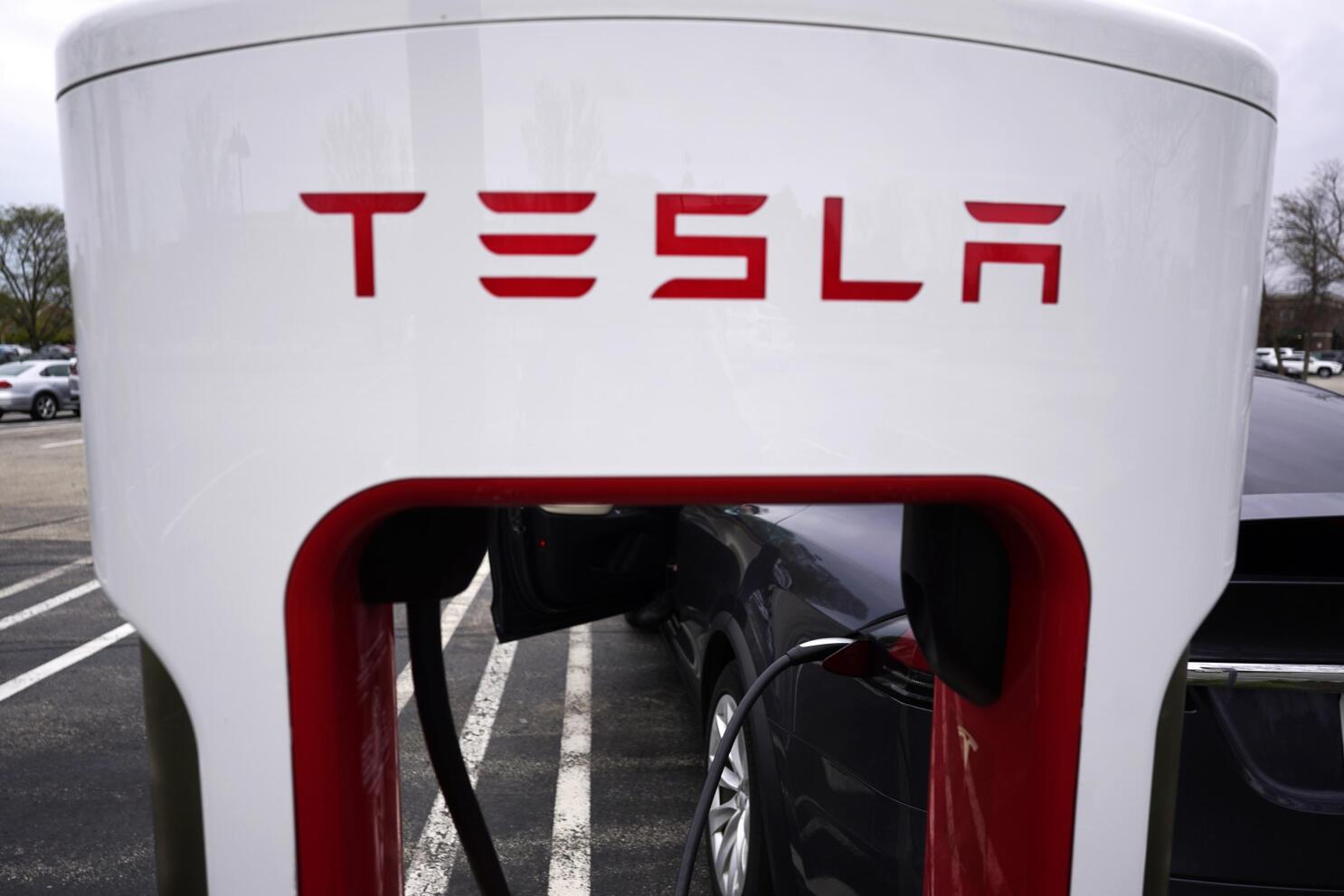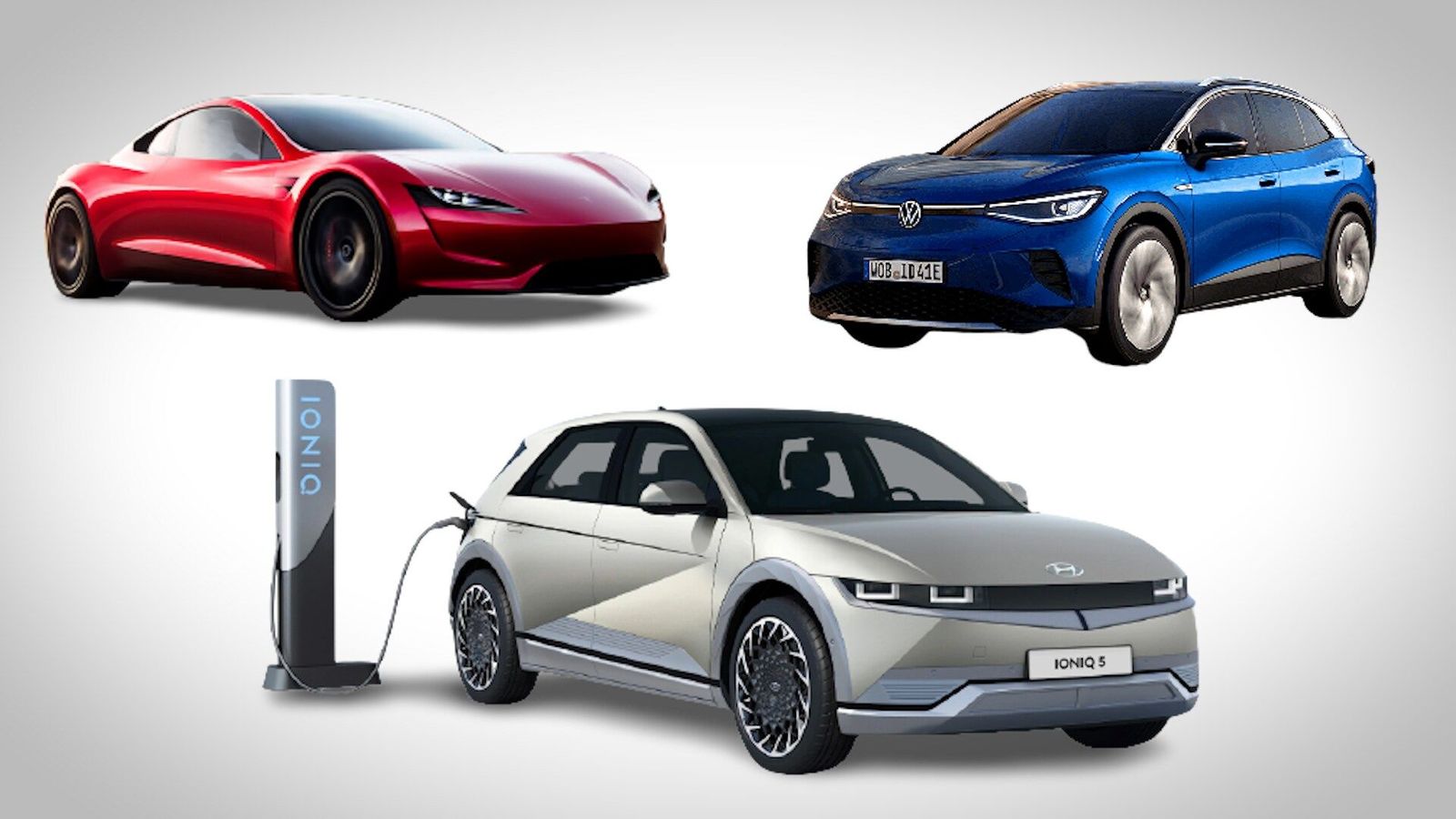Top automakers in US want to counter Tesla’s EV charging dominance with a new company

Top automakers in US want to counter Tesla’s EV charging dominance with a new company
The move by major automakers in the US to form a joint venture and create an electric vehicle charging network is a significant step towards advancing electric mobility and taking advantage of the incentives and subsidies provided by the Biden administration to promote clean transportation.
By coming together to establish a unified charging infrastructure, these automakers aim to compete with Tesla, which currently has a well-established and extensive charging network across North America. The joint venture’s plan to roll out 30,000 charging stations in the region, with a focus on major highways and cities, reflects their commitment to expanding electric vehicle charging accessibility and addressing range anxiety for potential EV owners.
The Biden administration’s emphasis on supporting clean energy and reducing greenhouse gas emissions has led to various incentives and subsidies to promote the adoption of electric vehicles. This joint venture seeks to leverage these favourable policies and incentives to accelerate the adoption of electric vehicles in the US market.
A robust and widespread charging network is crucial for the widespread adoption of electric vehicles, as it eliminates concerns about charging accessibility and range limitations. By investing in charging infrastructure, major automakers are not only enhancing the appeal of electric vehicles but also demonstrating their commitment to sustainability and environmental responsibility.
The joint venture’s collaborative approach is expected to foster healthy competition in the electric vehicle market and drive innovation in charging technologies. As the popularity of electric vehicles continues to grow, having a reliable and efficient charging infrastructure becomes vital to cater to the increasing demand.
The rollout of 30,000 charging stations is a bold step towards creating a comprehensive charging network that complements the rapidly expanding fleet of electric vehicles in North America. This initiative is likely to bolster consumer confidence in electric mobility and pave the way for a cleaner and more sustainable transportation future. As the partnership progresses, it will be interesting to see how it impacts the overall EV market and contributes to the transition towards greener transportation alternatives.

The collaboration of major automakers, including General Motors, Stellantis, Hyundai Motor and its Kia affiliate, Honda, BMW, and Mercedes, to establish a joint venture for building an electric vehicle charging network is a significant development in the push for electric mobility in the US market. These companies collectively represent a substantial share of vehicle sales in the country, making this initiative a notable force in the automotive industry.
While the collaboration aims to accelerate the adoption of electric vehicles and promote sustainable transportation, its size and influence in the market could raise antitrust concerns. With almost 50 per cent of the vehicle sales in the US market being represented by the participating companies, there might be scrutiny from regulatory authorities to ensure fair competition and consumer benefits.
Nonetheless, the Biden administration has expressed support for this initiative, recognizing it as an important step forward in advancing electric mobility and reducing carbon emissions. The White House’s welcome of the new joint venture highlights its commitment to promoting clean energy and sustainability while also acknowledging the potential for job creation in the installation and maintenance of the charging infrastructure.
As the partnership moves forward, it will be crucial for the involved automakers to work in compliance with antitrust regulations and ensure fair competition in the electric vehicle market. The success of this venture will not only depend on its ability to deploy a large-scale charging network but also on its adherence to legal and regulatory frameworks.
The establishment of a comprehensive and widespread charging infrastructure is pivotal for overcoming range anxiety and boosting consumer confidence in electric vehicles. By addressing this critical aspect of electric mobility, the collaboration seeks to make electric vehicles more attractive and accessible to a broader audience.
The joint venture’s focus on deploying charging stations along major highways and in cities is a strategic move, as it targets high-traffic areas where the need for reliable charging options is particularly significant. As electric vehicle adoption continues to grow, such a robust charging network will become increasingly vital for supporting the expanding fleet of electric vehicles and facilitating long-distance travel.

Overall, the collaborative efforts of major automakers to build an electric vehicle charging network demonstrate their commitment to sustainable transportation and align with the Biden administration’s clean energy agenda. By working together, these companies have the potential to make a significant impact on the electric vehicle market and contribute to a greener and more sustainable future for transportation.
The United States currently has a total of 30,000 fast-charging machines for electric vehicles (EVs). However, to accelerate the adoption of electric mobility and support the growing number of electric vehicles on the roads, the Biden administration has set an ambitious target of reaching 500,000 chargers by 2030. This target represents a nearly four-fold increase in the number of charging stations compared to the existing infrastructure.
While the US electric vehicle market has been expanding, Tesla has been a dominant player, accounting for over 60% of EV sales in the country. As a result, Tesla’s charging network, known as the “Supercharger” network, has become the largest in the US, with approximately 18,000 superchargers spread across the country. Tesla’s charging infrastructure has played a crucial role in alleviating range anxiety and providing a reliable charging solution for Tesla owners during their travels.
However, the push by other major automakers, as part of the joint venture initiative, signals a collective effort to rival Tesla’s charging network and build a more extensive and accessible charging infrastructure for all-electric vehicles. By combining their resources and market presence, these automakers aim to deploy 30,000 charging stations across North America, focusing on major highways and cities, to make electric mobility a more viable and convenient option for consumers.
The Biden administration’s commitment to increasing the number of chargers aligns with its broader efforts to combat climate change, promote clean energy, and accelerate the transition to electric vehicles. By expanding the charging infrastructure, the government aims to address one of the key challenges hindering the widespread adoption of electric vehicles – the availability of convenient and fast charging options.
As the electric vehicle market continues to evolve, the growth of the charging infrastructure will play a critical role in shaping consumer perceptions and preferences for electric vehicles. The development of a comprehensive and robust charging network will be crucial for encouraging more consumers to switch to electric vehicles and contribute to reducing greenhouse gas emissions from the transportation sector.
While Tesla currently holds a significant advantage in terms of charging infrastructure, the joint venture by major automakers indicates a concerted effort to level the playing field and establish a competitive and equitable charging ecosystem for all electric vehicle users.
As the industry moves forward, competition in the electric vehicle charging space is likely to intensify, ultimately benefiting consumers with improved accessibility and convenience for charging their electric vehicles.
Tesla’s pioneering efforts in developing charging infrastructure have indeed established the company as a leader in the electric vehicle charging space. As a result, other major automakers have recognized the value of Tesla’s charging technology and are looking to collaborate with the company to leverage its charging network.
General Motors (GM), Mercedes, and other automakers have announced their intention to start using Tesla-developed charging technology from 2025. This move indicates the growing importance of standardization in the charging infrastructure to ensure seamless interoperability and convenience for electric vehicle users.
For GM, gaining access to Tesla’s charging network could lead to substantial cost savings.
The company has estimated potential savings of around $400 million if it can utilize Tesla’s charging infrastructure rather than developing its network. By tapping into Tesla’s established charging stations, GM can reduce the investment and time required to build a robust charging network, thereby accelerating the adoption of electric vehicles and enhancing the overall charging experience for its customers.
However, not all automakers are committing to Tesla’s North American Charging Standard (NACS). Stellantis, Hyundai, Honda, and BMW have opted to use a rival system known as the Combined Charging System (CCS). The CCS is another widely adopted charging standard that supports both AC and DC charging, making it compatible with a broad range of electric vehicles.
The decision by these automakers to go with the CCS standard indicates that the industry is still exploring different approaches to charging infrastructure development. While Tesla’s NACS has been successful and has a well-established network, other automakers may believe that CCS aligns better with their own charging strategies or offers certain advantages in terms of compatibility with a wider range of electric vehicles.

As the electric vehicle market continues to evolve, standardization and interoperability will play a crucial role in ensuring a seamless charging experience for consumers. The collaboration between automakers and the utilization of standardized charging technologies will contribute to the growth and accessibility of charging infrastructure, ultimately benefitting electric vehicle owners and promoting the widespread adoption of electric mobility.
The new joint venture by major automakers in the US is a significant step towards expanding electric vehicle (EV) charging infrastructure and supporting the adoption of electric mobility. By supporting both the North American Charging Standard (NACS) and the Combined Charging System (CCS), the initiative aims to offer charging options that cater to a wide range of electric vehicles, promoting interoperability and convenience for EV users.
This collaborative effort by automakers will enable the deployment of 30,000 charging stations across North America, focusing on major highways and cities. This extensive charging network will not only compete with Tesla’s well-established Supercharger network but also with other charging companies like Volkswagen’s Electrify America and EVGo, which have been investing in building their charging infrastructures.
With Tesla’s Supercharger network holding a significant share of the US EV charging market and being a key factor in Tesla’s success, the new joint venture acknowledges the importance of offering a competitive alternative to enhance EV adoption. As the electric vehicle market continues to grow, the demand for reliable and accessible charging infrastructure becomes increasingly crucial. This venture by major automakers seeks to address this need and compete with existing charging providers to provide a seamless and convenient charging experience for electric vehicle owners.
The competition among charging companies benefits consumers as it drives innovation, encourages investment in charging technology, and ultimately leads to better and more accessible charging options. As more automakers enter the electric vehicle market and launch new electric models, the availability of a robust charging infrastructure becomes even more critical to meet the increasing demand for charging services.
By working together and investing in charging infrastructure, major automakers are not only positioning themselves to compete with existing charging networks but also aligning with the broader goal of accelerating the transition to sustainable transportation. The growth of a comprehensive and reliable charging infrastructure is a key enabler in realizing a future where electric vehicles play a central role in reducing greenhouse gas emissions and building a more sustainable transportation ecosystem.
As the electric vehicle market evolves, collaboration between automakers, charging companies, and government initiatives will continue to shape the future of EV charging infrastructure, making it more efficient, accessible, and attractive for consumers. This competition and cooperation will drive progress and create a more sustainable and cleaner future for the automotive industry and the planet as a whole.




